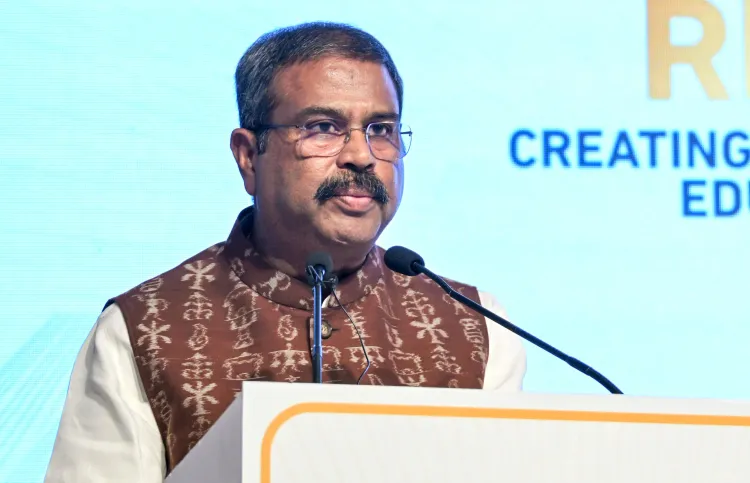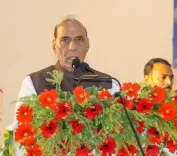Did Indian Higher Education Institutes in QS Rankings Really Double in the Last 5 Years?

Synopsis
Key Takeaways
- 54 Indian HEIs in QS WUR 2026.
- Significant growth from 27 in 2021.
- 8 institutions ranked for the first time.
- Focus on research, innovation, and industry collaboration.
- Establishment of new Central Higher Educational Institutions.
New Delhi, Aug 18 (NationPress) The count of higher education institutions (HEIs) in the QS World University Rankings (QS-WUR) has surged in the past five years, increasing from 27 in 2021 to 54 in 2026, as reported to Parliament on Monday by the government.
During a Lok Sabha session, Union Education Minister Dharmendra Pradhan revealed that India has achieved its most significant representation in QS-WUR 2026. He elaborated on the status of higher education in the nation.
“The number of Indian HEIs listed in the QS World University Rankings has doubled over the last five years, climbing from 27 in QS WUR 2021 to 54 in QS WUR 2026,” Pradhan stated.
“A total of fifty-four Indian institutions have made it to the QS WUR 2026 rankings. This marks India's highest representation to date, up from 11 institutions in QS WUR 2015 to 54 in QS WUR 2026. Notably, eight Indian institutions have been ranked for the first time, achieving the highest number for any country in this edition, both within the G20 and globally,” he continued.
The rankings highlight “consistent policy initiatives, enhanced research and innovation capabilities, and an increasing global profile of India’s higher education system,” Pradhan added.
The Minister pointed out that to improve the quality of higher education, the government has initiated various measures such as developing quality infrastructure, bolstering the research and innovation ecosystem, and fostering industry-academia collaborations.
“These initiatives are further supported by strong accreditation and ranking frameworks like the National Board of Accreditation (NBA) and the National Institutional Ranking Framework (NIRF), which have propelled Indian HEIs into a more competitive landscape. The enhanced educational quality has consequently led to substantial advancements in the international rankings of Indian HEIs, including the QS WUR,” Pradhan stated.
He also mentioned that the government has made dedicated efforts to elevate the quality of education across the nation.
Since 2014, improvements in the higher education ecosystem have been facilitated by the establishment of new Central Higher Educational Institutions (CHEIs) in fields such as technical education, management, scientific research, information technology, and humanities.
CHEIs are designed to act as pioneering institutions offering academic leadership to other regional institutions.
“Since 2014, we have launched 16 Indian Institutes of Information Technology (IIIT), eight Central Universities (CU), eight Indian Institutes of Management (IIM), seven Indian Institutes of Technology (IIT), two Indian Institutes of Science Education and Research (IISER), and one National Institute of Technology (NIT),” Pradhan informed.
Moreover, in line with the principles of NEP 2020, the Anusandhan National Research Foundation (ANRF) has been set up as a premier body to offer high-level strategic guidance for research, innovation, and entrepreneurship in various natural sciences, encompassing mathematical sciences, engineering and technology, environmental and earth sciences, health, and agriculture. The projected total cost of ANRF over five years is Rs 50,000 crores.
The government also sanctioned a new Central Sector Scheme, One Nation One Subscription (ONOS).
ONOS aims to broaden access to scholarly journals for a vast array of students, faculty, researchers, and scientists across all disciplines of HEIs managed by the Central or state government, along with Central government research and development institutions, through a national subscription coordinated by a central agency.
“Over 6,300 institutions are included in this scheme. A total of approximately Rs 6,000 crore has been allocated for the scheme for the calendar years 2025, 2026, and 2027,” Pradhan concluded.









